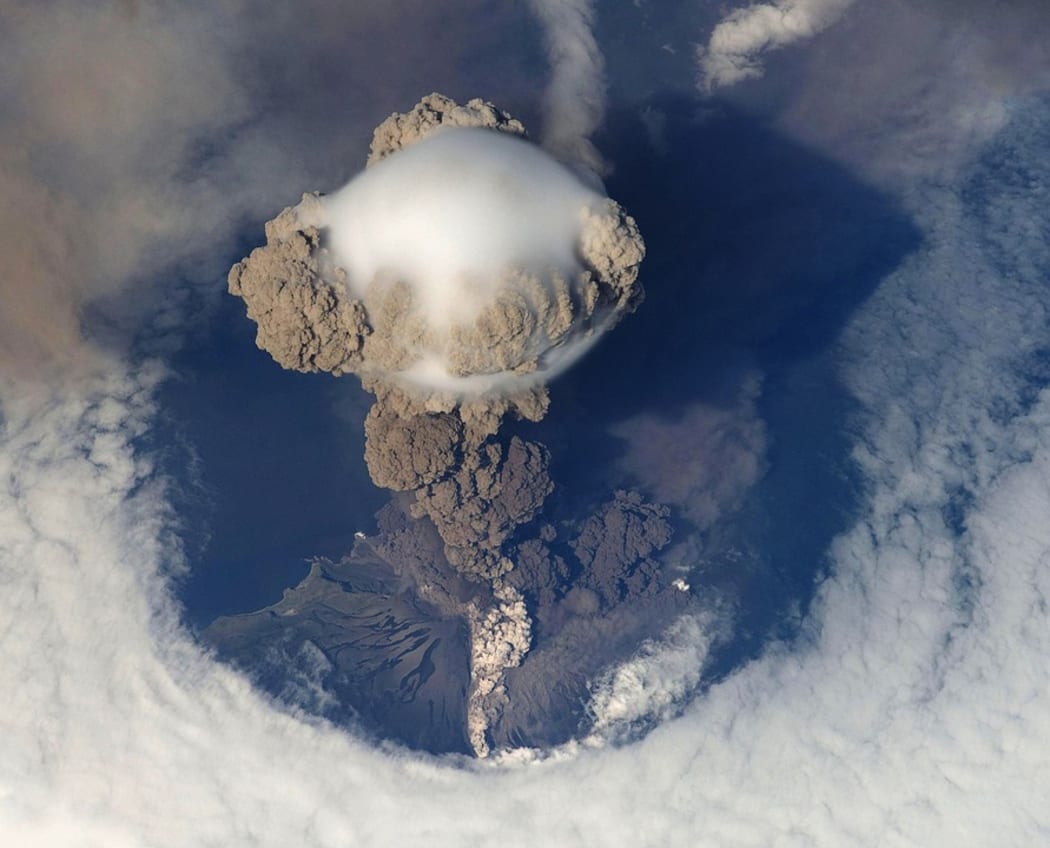To avoid runaway global heating we need to extract carbon from the atmosphere as well as cut emissions, a former UN climate change director says.
But few climate engineering technologies are proven or available to us at scale, Janos Pasztor says.

Some geoengineering proposals are modelled on erupting volcanoes, which can lead to cooling as ash is pumped into the atmosphere, deflecting the sun's rays. Photo: Pixabay
Janos Pasztor is a former United Nations assistant secretary-general on climate change and is currently executive director of the Carnegie Climate Governance Initiative (C2G), he told Kathryn Ryan large scale interventions will be necessary to stay within 1.5 degrees of warming.
“According to the latest information from the Intergovernmental Panel on Climate Change, under the most optimistic scenarios of emission reductions, we will still need to remove carbon from the atmosphere of the order of 100 to 1000 gigatonnes for the century under the most optimistic scenario. And unfortunately, those scenarios are not being implemented.
“Another way to put it is that we can no longer solve the climate crisis by emission reductions alone.”
While a range of carbon removal technologies exist theoretically so called nature-based solutions are the only ones we can implement immediately, he says.
Nature-based solutions involves planting more trees, increasing the carbon content of soils, using oceans as potential methods for absorbing carbon, he says.
“At the one end these nature-based solutions, at the other end, we have highly technological-based solutions, such as direct air capture where you literally suck CO2 out of the air, and then using chemical conversion, to fix it and then store it underground or under the sea.”
Hybrid options, or a combination of the two also exist, he says.
“The challenge we have is that most of those techniques, other than the nature-based solutions, are not available at the scale and the price that we would need to have them, and it would take decades to develop them at the level and the price that would be possible,” he says.
Nothing is deployable immediately other than the nature-based solutions, he says.
“But even there, there are socio-economic and environmental challenges that one needs to take into account; if you want to do mass reforestation, then you have to make sure that that land was not used for something else, for example, food production.”
There is, he says, “no free lunch” available - every action to mitigate climate change comes with a price.
“We only have challenging solutions and what we have to do is find in an overall risk management framework, what is the best, or the least worst, for societies to undertake.”
He says we could be in big trouble if climate engineering technology is not deployed in the next couple of decades.
“If not we will find ourselves mid-century with not too many options left, temperatures are rising and emissions are not going down.”
He says some scientists believe that in addition to slashing emissions and removing carbon from the atmosphere, we will also have to reflect heat away from the earth.
“Decarbonisation and carbon removal all of those take time, and in the meantime, temperatures are going up. We can see the world today, we're at one degree above historical average and already there is havoc.
“And that average of one degree is translated into much more than at specific places. In the Arctic we have 20 degrees, and the ice is melting like crazy.”
It is these current extremes of temperature at the poles, that have scientists particularly worried, he says.
“So, imagine a world of two or three degrees above historical average? So what scientists are saying is that we may need to consider these science-fictiony sounding technologies like stratospheric aerosol injection, where you would go with aeroplanes or balloons, and spread certain materials into the stratosphere to reflect sunlight back into space, and thereby cooling the planet for a certain period of time.”
There is an analogue for this in nature; volcanic eruptions, Pasztor says.
“When Mount Pinatubo in 1981 exploded in the Philippines, there was an eruption, and global temperature went down by about half a degree for about a year.
“What we're talking about is many tens of aeroplanes flying in the stratosphere on an almost ongoing basis, releasing materials either the aerosol or diamond dust or carbonates, or different material scientists are talking about.”
This potentially could replicate the temporary cooling effect of volcanic ash, he says. But it is not yet proven and even if it did work offers no permanent solution.
“The latest information seems to indicate that the direct cost of doing this would be off the order of $2 billion to $3 billion annually.
“That's very little money compared to all these other numbers we're talking about. This is one of our worries, that this is so dangerously low that it could be politically attractive as a potential solution when it is not a solution.”
There is also work going on to see if specific locations can be protected from the effects of heating, such as polar ice caps and the Barrier Reef, he says.
“What I think is important to recognise is that we are in a climate crisis, and we need all the solutions. And these kinds of solution will not solve all the problems but may solve one set of problems.”

